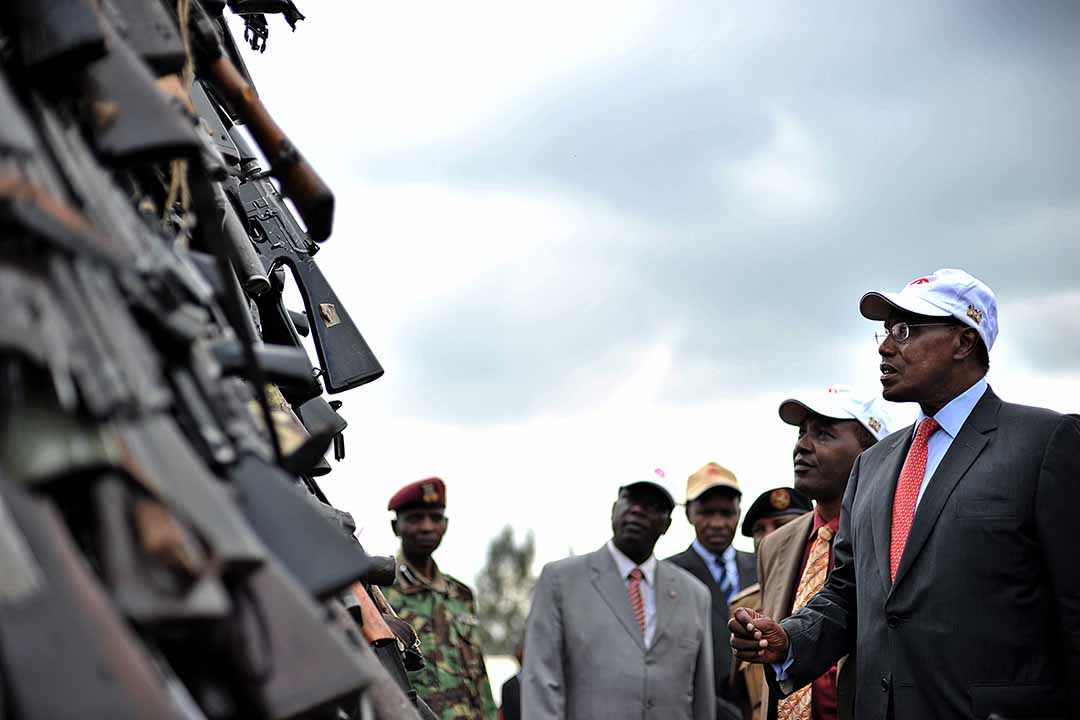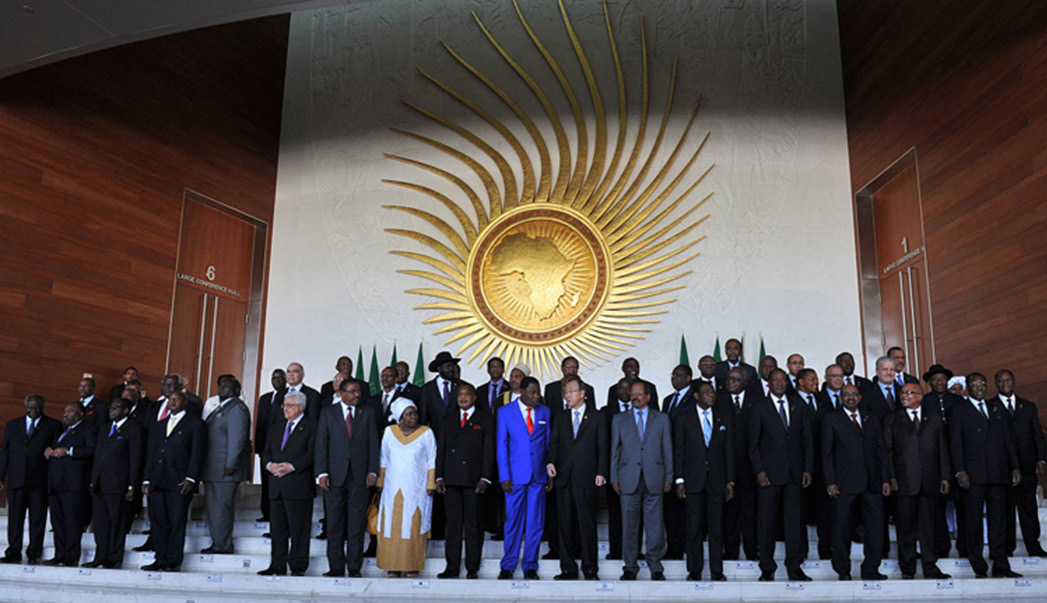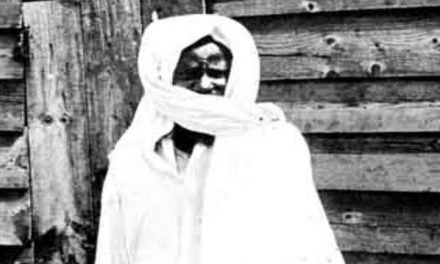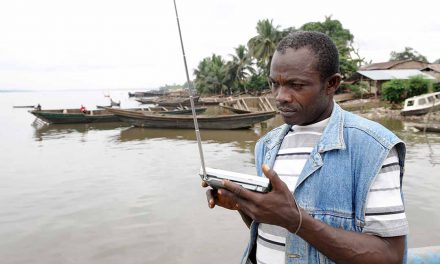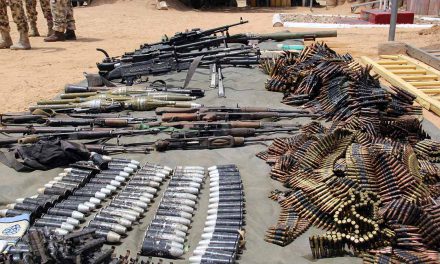Kenya: the arms race
Kenyan authorities are grappling to answer the question of how large numbers of illegal firearms have ended up in civilian hands

Kenyan government minister George Saitoti (R) inspects a cache of illegal firearms in Nairobi in March 2010 before it is set ablaze as part of a government campaign to mop-up illicit small arms and light weapons that are at the centre of violent crime in Kenya and Africa. Photo: TONY KARUMBA / AFP
Referred to as the “green city in the sun”, Kenya’s capital, Nairobi, hosts more than 100 multinationals, including the United Nations Environment Programme. It is seen as a city with solid business magnetism and rich culture, and it is home to the second oldest stock exchange in Africa. But that is as far as Nairobi’s picture glows. The death rate from guns in Nairobi is 33 for every 100,000 people per year. Factoring in its population of 3.5 million, this means that on average, a gun death occurs once every nine hours, 25 minutes and 49 seconds. The high crime rate is tied to the fact that there are six illegal guns in the hands of every 100 Nairobians. The 2018 Annual Crime Report by the National Police Service indicates that there were 4,954 crime cases in Nairobi in 2016.
This went up to 7,434 in the succeeding year before dipping slightly to 7,128 in 2018. This is almost six times higher than the same rate in north-eastern Kenya, which borders two volatile countries – Somalia and Ethiopia. The organised crime rate in Ethiopia was at 1,122, 1,323 and 1,490 in 2016, 2017 and 2018 respectively. In the same period under review, in Nairobi 10 police officers were killed in 2017, and 11 in 2018 compared to three officers in central Kenya in each of the same years. The Kenyan police expect crime rates to increase in 2020 due to growth in the illicit trade in firearms and the rise in drug abuse. In 2018, 192 firearms were recovered and 19 surrendered. Of these, 121 guns were reclaimed from Nairobi County, representing 63% of the total guns recaptured in the country.
Experts associate the sale of illegal weapons, which has hit crisis proportions, with high crime rates in Nairobi. According to the Institute for Security Studies, a think tank based in Pretoria, black marketers sell about 11,000 guns in Nairobi every year. Most of them enter Kenya through the porous borders of Ethiopia, Somalia, South Sudan and Uganda. Due the nature of the borders, cross-border crime continues to be a challenge, Inspector General of Police Hillary Mutyambai told Africa in Fact. He says Kibish in Turkana County has emerged as a hotspot for such incidents. Security personnel and criminals from Ethiopia and Uganda, he says, come through the border and confront Kenyan civilians and security officers. At the Kibish border point, 70 km from Nairobi, there were a total of 26 reported incidences in 2018, resulting in 11 deaths – 10 civilians and a police officer.
Once inside Kenya, the firearms are transported to major urban areas such as Nairobi, Mombasa, Nakuru, Narok, and Kisumu, to cities and slums where sales are fast, guaranteed, and the returns are higher. The arms merchants know which routes to use and which ones to avoid, says Aggrey Mwakisha, a security analyst based in Lunga Lunga at the Kenya-Tanzania border. Mwakisha says the guns traders are so powerful that they even influence the transfer of individual members of the security apparatus who they deem unfriendly to their cause. Their organisation and logistics resemble those of drug dealers, he notes, and that some of the most common ways of transporting arms include the use of police vehicles, ambulances, and trucks disguised to look like they are carrying grain or transporting animals to market.
The police say that Eastleigh is one of the main places in Nairobi where guns are sold. The neighbourhood is sometimes referred to as “small Mogadishu” due to its large population of Somalis. A senior officer at the Department of Criminal Investigations, who requested anonymity, says that at least two small guns and about 100 bullets are sold in the area every day. At some black markets in Eastleigh, guns are leased out at a price of between Sh15,000 ($150) and Sh50,000 ($500) a night, depending on the “assignment”. A bullet, he adds, is sold for Sh500 ($5). This is Sh400 ($4) more than the retail price at Lwakhakha, on the Kenya-Uganda border, which is well known for its coffee bean smuggling. Meagre salaries, coupled with poor working conditions, have also seen some security officers getting involved in criminal acts, renting out their guns or selling bullets to criminals, for example.
Most of the guns held in Kenya are unlicensed, according to a June 2018 briefing paper by the Geneva-based Small Arms Survey. These firearms range from improvised craft weapons, like self-loading pistols, to factory-made handguns, rifles and shotguns – many of which are associated with the growing number of break ins, muggings and hijackings. The Small Arms Survey estimates Kenya: the arms race that there is slightly more than one gun per 100 civilians in Kenya. Out of the 650,000 private firearms, only 8,136 are licensed. Kenya’s stockpile of privately-owned guns is larger than those of its East African peers: Uganda has 331,000, Ethiopia stands at 377,000, while Rwanda’s stack is 66,000. Ironically, the number of guns in private hands in Kenya is much larger than the 45,790 held by the military and 51,527 in the hands of the police.
No wonder, then, that Kenya recorded 2,305 gun related deaths in 2014 and 2,261 in 2015 (During the same period, the UK recorded 14 and 11 deaths caused by guns, respectively.) How large numbers of guns have ended up in civilian hands is a question authorities are still grappling to answer. A source at Kenya’s Central Firearms Bureau says the country has strict guidelines on arms acquisition in place, but these are frustrated by corruption, incompetence and political intimidation. No thorough vetting is done before applicants are issued with gun licences, according to the same source; civilians without sufficient training in the use of small arms can still become licensed firearms holders. In late 2018, Internal Security Minister Fred Matiang’i disbanded the entire Firearms Licensing Board and appointed new board members.
The minister also suspended the licences of all firearms dealers and ordered them to be vetted afresh. The chairperson of the Kenya National Commission on Human Rights, Kagwiria Mbogori, notes that the demand for illegal arms in Nairobi has been rising since October 2011, when Kenya launched Operation Linda Nchi (Operation Protect the Nation) against Al-Shabaab in Somalia following a series of extremist attacks and kidnappings of foreigners in the northern part of Kenya. Mbogori says the use the arms against civilian targets is rising. She warned of “declining security dynamics” if the arms supply was not stemmed urgently. In her view, the crucial influence on the illicit arms trade in Kenya is poor security in unstable countries such as Somalia, the Democratic Republic of Congo (DRC), South Sudan, northern Uganda, and southern Ethiopia.
Given the reality of porous borders and ill-equipped security agencies, preventing the proliferation of arms in Kenya will take concerted internal and external efforts. The best way to deal effectively with illegal small arms sales is by intensifying intelligence gathering, Mbogori argues. The sources and mechanisms of arms acquisition and distribution channels need to be monitored and addressed in particular, she adds. According to Kenya’s 2019 State of the National Security report, some 650,000 light weapons are privately owned countrywide. In a media briefing on the state of security on October 18, Kenyan government Spokesman Cyrus Oguna said it had come up with a raft of strategies to address the proliferation of illicit arms. These strategies would be applied not only in Nairobi but the whole of the country.
As part of this, the government says it has developed a draft national policy on small arms and light weapons and a Small Arms and Light Weapons Control and Management Bill. Once it is made into law, the Bill will be augmented by the Protocol on the Prevention, Combating and Eradication of Cattle Rustling in Eastern Africa of August 2008 and the Arms Trade Treaty (ATT), which it will soon ratify. Meanwhile, the internal security ministry says it is implementing “stiff measures” to control the private ownership of guns. Early in 2019, the ministry called on all people possessing illegal firearms to surrender them to the relevant authorities. And in addition to the measures taken against gun dealers, Matiang’i has ordered the fresh vetting of 4,407 private gun owners suspected of having acquired their weapons illegally, or through corruption.
Matiang’i says the vetting exercise has been successful so far, with those found to have obtained their licences through corruption losing their firearms, although he did not supply figures. Matiang’i says about 40 organised criminal groups are operating in Kenya, including one known as the Mombasa Republican Council, based in Coast Province, and the notoriously violent Mungiki gang in central Kenya. “Organised criminal gangs pose a headache to … national security. There is growing recognition that the intersection between organised crime and terror groups is deepening and becoming more complex,” he said on September 27 2019 when he launched a crackdown on Mungiki in Gatundu, central Kenya. Mutyambai said in a statement to newsrooms in May 2019 that the government had redoubled its efforts to curb illicit firearms and that doing so was crucial to the success of Kenya’s agenda for economic growth, known as the “Big Four”, which was unveiled by President Uhuru Kenyatta in 2018.
This plan sees security as one of four elements required for long-term investment and sustained economic development. Kenya continues to invest in internal security by equipping the police, improving their welfare and embracing a multi-sectoral approach to fighting insecurity, Mutyambai said. But Nairobi County Governor Mike Sonko differs. He blames the high number of gun-related crimes in the city on youth unemployment, which stands at an average of 39.1%, according to the 2017 UN Human Development Index. “Many youth still possess illegal guns in Nairobi,” he told Africa in Fact. “Action needs to be taken against them, but for this to yield fruit, the police need to work closely with the community. The governor says he is working on pro-youth policies aimed at generating opportunities for young people to earn a living.
These include “engaging with” young people, developing alternative sources of work and income, and driving enrolments at technical training colleges that will “arm” young people with employable competencies, he told Africa in Fact. Meanwhile, young people say that deeply ingrained corruption and nepotism continue to frustrate their ambitions for employment. Jacob Macharia, 26, has an accounting degree from Kenyatta University, but it’s been four years since he graduated and he has yet to find a job. Unless you know someone “up there” in either the public or corporate sector, he says, you won’t even be shortlisted for a job interview. “The exasperation of joblessness” and the need to survive drive many people in Nairobi to buy firearms and engage in crime, he says.
But that’s not an option for him, Macharia insists. He refuses to pay for a job, and says he may have to “retire” to his rural home in Nyeri, central Kenya, to work in the not-so-promising farming business.
Eddy Odour is an economist and a statistician with more than 15 years’ experience in data analysis. He runs an independent research firm in Nairobi, Kenya, that consults on trade, regional integration and infrastructure.

